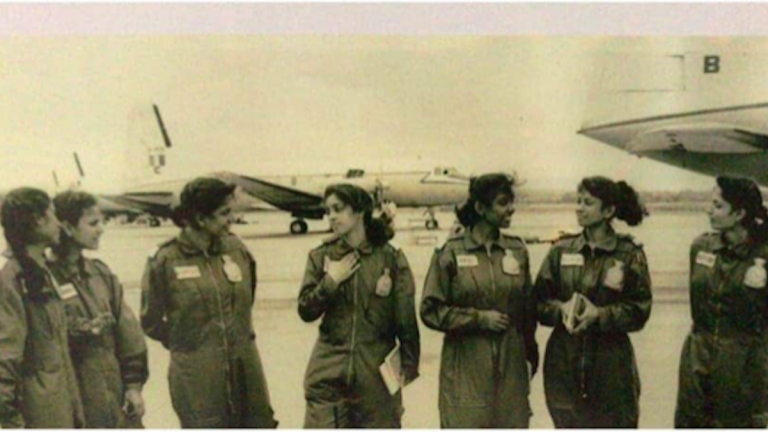
SOURCE: THE PRINT
The year was 1979. As a young, newly married ‘Pilot Officer’, I was set to attend a welcome party for my wife. As we entered the anteroom in the Officers’ Mess, all officers including the commanding officer stood up and wouldn’t sit down till my wife, accompanying the junior-most officer in the room, was seated.
This was not just a gesture to welcome my wife. I was experiencing, first-hand, a culture that respected women. This tradition of the Indian Air Force—IAF—still exists. And to believe that Gunjan Saxena, or for that matter any other woman pilot, was subjected to arm wrestling—as the film on her shows!
A lot has been said and written on social and print media on Gunjan Saxena: The Kargil Girl. Most of it criticising the movie. Most of it correct. The aim is not to denigrate the film, which released on Netflix, anymore, but to tell the people of India about the values that are cherished in the services when it comes to women, in or out of uniform.
Equals in land and air
I was one of the instructors back in July 1994 when the first batch of seven women pilots arrived at the Air Force Station at Yelahanka, Bengaluru, to commence training on IAF transport aircraft. There was excitement in the media, as there is now. But the station was preparing to receive the women in the same way as it would have received a batch of trainee men. There were subtle changes made such as preparing a changing-cum-rest room. No one had to run to their room to change as shown in Gunjan Saxena. There was no doubt, however, that the women would be treated the same way at work — professionally, as IAF trainee pilots, socially as a lady, and one amongst equals everywhere else. No quarters were given, none were expected.
As it turned out, one of my trainees, cadet Harita Kaur Deol (later Flt Lt Harita Deol) was the first to go solo. I still recall the day. In response to my inquisitive look about her performance in her solo check, the examiner just smiled and gave me a big thumbs up. Flt Lt Harita Deol would lay down her life in the service of the nation on 25 December 1996 in a tragic and unfortunate crash. I shall always be proud of her. Three of her course mates are commercial pilots now and one is a Flight Operations Inspector in Directorate General of Civil Aviation (DGCA). Talk to any one of them, and they’ll tell you how far Gunjan Saxena is from the truth.
Bad taste and timing
The makers of any film will always have commercial success as their primary goal. In doing so, some dramatisation is, perhaps, necessary. But the right to put down an institution like the IAF, even worse show it in bad light? Definitely not.
There are other questions that come to mind. Was the film script shared with the IAF? If so, was it approved in its present form, and by whom? A film like this releasing when the IAF has moved on to induct women pilots in the fighter stream is bad timing and taste.
During the training of the first batch of women pilots at Yelahanka, not a day would pass when the media would not visit to interview the women and see them in action.
On one of those days, we had someone from the media coming onboard Harita’s training flight. As Harita and I walked to the aircraft, I told her to ignore the journalist and focus on the flight for the day. On that day, she was scheduled to learn shutting down an engine and restarting it in air. As she went through the paces with a demonstration of the exercise by the instructor followed by practice by her, I could see the journalist sweating more than Harita.
Not in the IAF
Gender bias has been part of Indian society for ages, but women have been part of the defence services in many fields for years. Aviation, per se, and particularly the IAF, continues to be an enigma for people at large. “There is a decided prejudice on the part of the general public against being piloted by a woman, and as great an aversion, partially, because of this, by executives of those companies whose activities require employing pilots,” Louise Thaden had written in 1938.
Rest assured, the IAF has never had that prejudice, much against what Gunjan Saxena might want you to believe.
The author is an IAF veteran with four decades of flying behind him. He is the present head of Flight Operations, Blue Dart Aviation Ltd. Views are personal.






